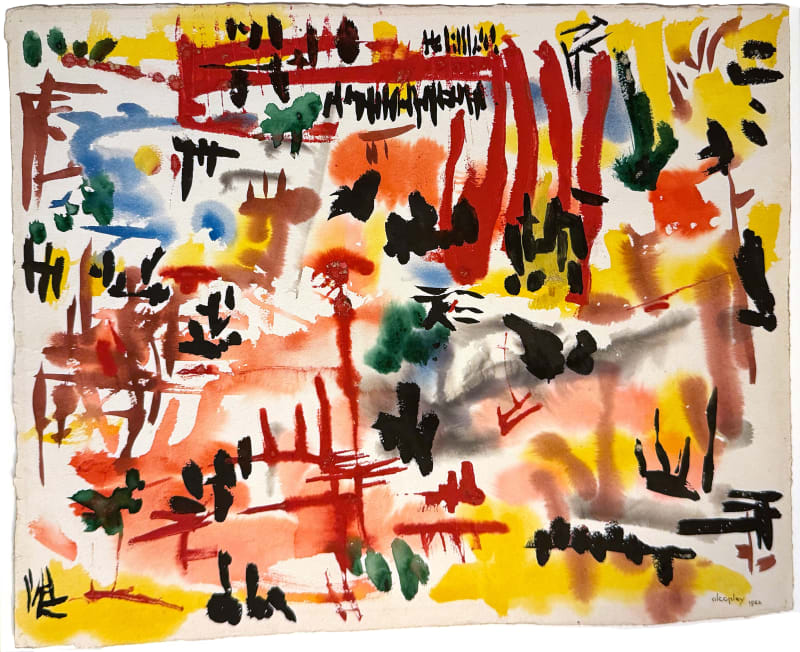"Alcopley’s work in both art and science is driven by a deep curiosity and an analytical mind. His paintings are an exploration of movement and life, much like his scientific studies of blood flow, indicating how his two passions were intertwined." -Unknown
Alfred Lewin Copley, known professionally as Alcopley, was a distinguished German-American abstract expressionist painter and a pioneering scientist in the field of hemorheology. Born in Dresden, Germany, Alcopley was deeply influenced by the modernist movements of his time, including German Expressionism and the avant-garde art scene of Dresden, which was home to notable artists like Oskar Kokoschka and Otto Dix.
Alcopley pursued dual careers in art and science, earning doctorates in physiology and medicine before immigrating to the United States in 1937. In New York, he became a key figure in the New York School of abstract expressionists, closely associating with artists such as Willem de Kooning, Franz Kline, and Mark Rothko. His paintings are characterized by their abstract forms, meticulous approach, and the integration of scientific concepts, particularly fluid dynamics, which he studied extensively as a scientist.
As a scientist, Alfred Copley made groundbreaking contributions to the understanding of blood flow properties, founding the fields of biorheology and hemorheology. His scientific work was known for challenging existing theories, leading to new treatments in medicine. Despite the demands of his scientific career, Alcopley remained deeply committed to his art, with his work being exhibited in major galleries and museums worldwide.
Alcopley's art is included in the collections of several prestigious institutions, including the Museum of Modern Art (MoMA) in New York, the Whitney Museum of American Art, and the Guggenheim Museum. His works are also part of international collections such as the Centre Pompidou in Paris, France.
Alcopley's dual identity as a scientist and an artist allowed him to explore the connections between art and science, making him a unique figure in both fields. His legacy continues to be celebrated for its intellectual depth, creative innovation, and cross-disciplinary impact.
